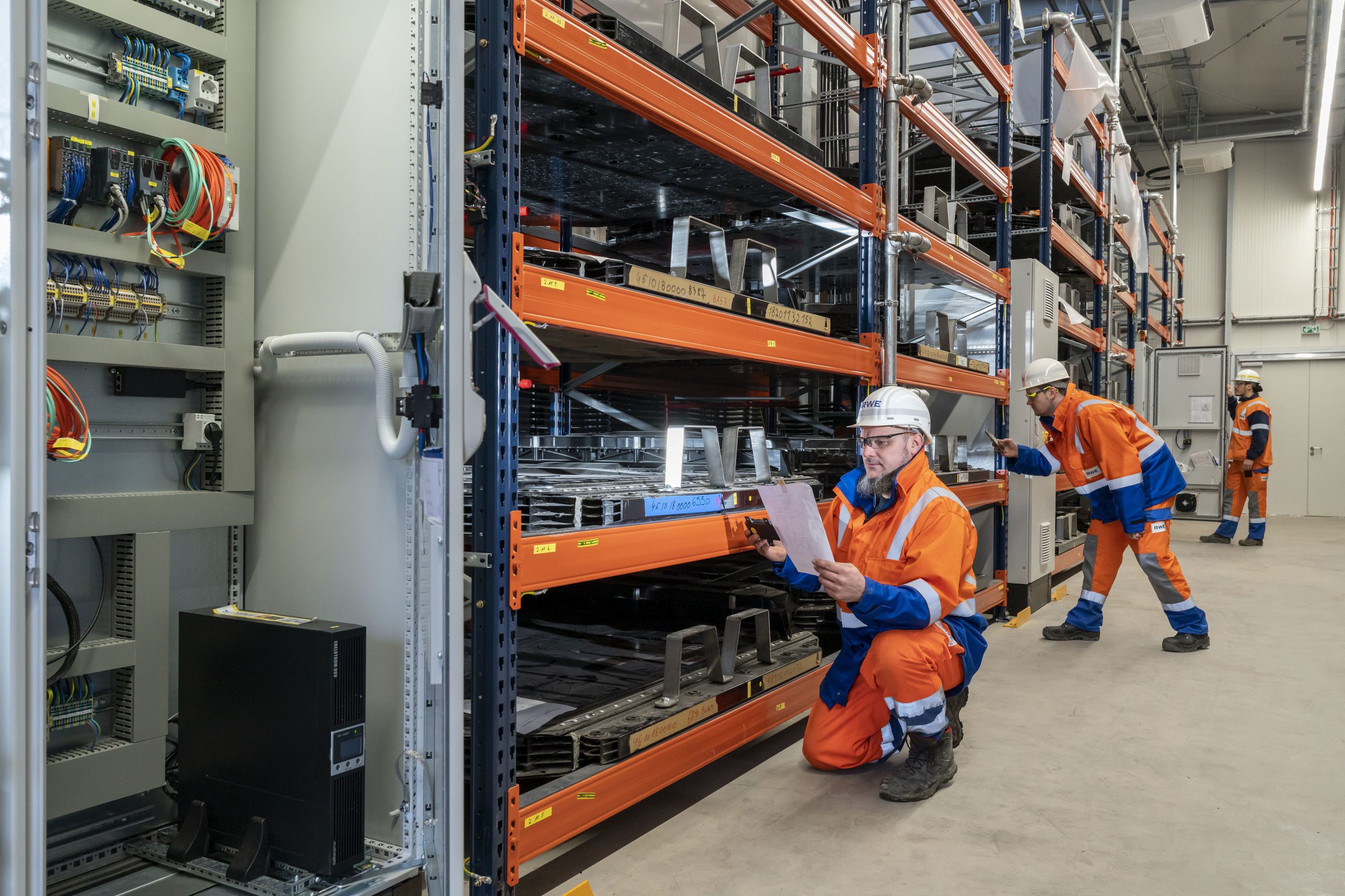 Second life for EV batteries: Audi and RWE create novel energy storage system in Herdecke.
Second life for EV batteries: Audi and RWE create novel energy storage system in Herdecke.
Audi and RWE are breaking new ground together as part of the energy transition: RWE has commissioned an energy storage facility in Herdecke in North Rhine-Westphalia that uses used lithium-ion batteries from Audi electric cars. With the help of 60 battery systems, the innovative storage facility on the site of the RWE pumped storage power plant at Hengsteysee will be able to temporarily store around 4.5 megawatt hours of electricity.
Read this article in the current eMove360° magazine in german language – download it here for free.
The discarded batteries provided for the project come from Audi e-tron development vehicles. After their first life in the car, they still have a residual capacity of more than 80 percent. This makes these “second-life batteries” ideal for use in stationary power storage. Depending on how they are used, the batteries still have a lifespan of up to ten years. They are also significantly cheaper than new cells. And that’s what “Second Life” stands for: The CO2 emissions generated during the production of the batteries are sustainably distributed over two lives (in the car and as an electricity storage device).
“Audi has set itself the goal of CO2-neutral mobility,” confirms Oliver Hoffmann, Member of the Board of Management for Technical Development at AUDI AG. And further: “We are working with all our strength to achieve this ambitious project. Our electric offensive with more than 20 fully electric models by 2025 is an important step. However, our claim goes far beyond the vehicle, which is why we are promoting the development of sustainable mobility through cooperation with partners from the energy industry. The cooperation with RWE is intended to show the possibilities for resource-saving use of used high-voltage batteries and their intelligent integration into the energy grid of the future. In addition, we are already thinking about the time after this usage phase and are pushing for effective battery recycling.”
For the 60 battery modules weighing around 700 kilograms, RWE has already built a 160 square meter lightweight hall on the site of its pumped storage power plant in Herdecke. The installation of the battery systems inside was completed in October. The commissioning of individual components started in November. RWE is expected to market the storage capacity of its Second Life battery storage system from the beginning of 2022 – initially to support the electricity grid as part of frequency control. After that, it is planned to flexibly test other marketing methods.
Roger Miesen, CEO of RWE Generation says: “Efficient battery storage is essential for the energy transition. Flexible storage technologies are needed to compensate for short-term fluctuations in renewable energies and to stabilize the grid. Battery storage is ideal for this. Together with Audi, we are testing in Herdecke how high-voltage batteries that have been decommissioned from e-cars behave as stationary energy storage devices when connected together. The continued use of such ‘second-life’ storage is a sustainable alternative to brand-new batteries. The experiences from this project will help us to identify the applications in which we can operate such battery systems most economically.”
The findings from the reference storage facility in Herdecke should help RWE to build and operate larger storage facilities based on electric car batteries in the future. An innovative technology is used for this, in which two modules are connected in series. This increases the operating voltage and reduces costs.